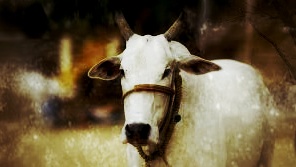We all know that Ahimsa or Non-violence is one of the core practices of Hinduism or Sanatan Dharma. Yet, we see that there are more non-vegetarian Hindus than Vegetarian ones.
Some people get confused about it. Vegetarian people often say that it is cruel to kill animals for food and restrain meat-eating.
Before we reach the answer to why Hindus eat non-vegetarian food, let's look at some of the facts that you might not know:
- More than 70% of Hindus are non-vegetarian to some extent.
- More than 90% of the Hindu population in Tamil Nadu eats Non-veg.
- Some of the Brahmins also eat meat, yes, Bengali and Kashmiri Brahmins eat non-veg.
What do scriptures say?
Hindu texts strongly encourage minimal violence and cruelty. They give more importance to vegan food than the opposite. Atharvaveda (6.140) mentions that "rice, beans, barley and sesamum" are the food types allotted for human consumption.
Many of the scriptures say that a man when he faces a threat to his survival. In this situation, he is even allowed to consume beef.
There are many contradictions, though. Manusmriti (5.51-52) states that there is no greater sinner than the man who makes his flesh thrive on someone else's.
What will happen if you do eat non-veg food?
Although there are a few exceptions, most of the Hindu texts do not ban eating non-vegetarian food. They encourage becoming a vegetarian.
In Bhagavad Gita (17.8-10), Lord Krishna says, "Different types of food have different influence on the behaviour and body of a Man. Meat has Tamasic property, so it increases anger, impatience and laziness in the body of a Man."
In short, "You Will Not Become a great sinner by consuming meat." But Your food will influence your body according to its property. That's why Kshatriya people ate meat and Brahmins did not.
So, Does that mean Hindu scriptures support cruelty to Animals?
Since ages, Hindus believed that Plants have life in them. And Lord Krishna says that he resides in every living body. So plants are considered as living beings and more than that they are considered sacred.
Also, Hindu Scriptures denote that plants have feelings of joy and pain. There are some references in Ramayana that when Sita was in Lanka, her sorrow stirred the trees and plants along with animals and birds. They expressed their pain by shedding flowers like tears.
So, there is no question of cruelty at all. Because if you want to survive, you have to take life energy from outside of your body. And no matter what type of food you eat, you consume a life either in the form of plant or in the form of an animal.
Why can we eat living plants but not living animals?
There are three types of Gunas (गुण) or qualities: Sattva, Raja and Tama (सत, रज, तम).
Sattva- This quality makes you calm, pleasant. It has high patience, forgiveness and submission to God. Sweet foods like Potato, fruits and milk increase Sattva Guna.
Raja- It means the quality of Kings. It makes you passionate, egoistic and active. This guna is neither too good nor too bad. Sour, salty, burning and hot foods increase Rajasic Guna. Onion and Garlic fall in this category.
Tama (Tamas)- This Quality makes you destructive, imbalanced, violent and ignorant. Food cooked more than three hours ago, meat and human flesh are Tamasic foods.
So it means, "You are what you eat." Having a plant-based diet helps you keep your mind stable. It makes you mentally stronger and wise.
Conclusion
In short, the choice of food depends totally upon you. But you should know it that too much Tamasic food will harm you.
Sattvic food will bring more pleasantness to you than Tamasic food. The plant-based diet is better for people who require working more with their mind than with the physical body.

No comments:
Post a Comment